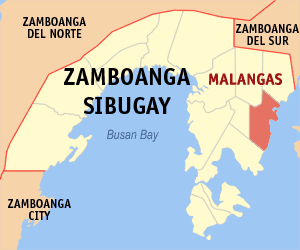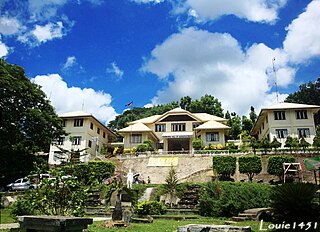
Dipolog, officially the City of Dipolog, is a 3rd class component city and capital of the province of Zamboanga del Norte, Philippines. According to the 2020 census, it has a population of 138,141 people.

Lakewood, officially the Municipality of Lakewood, is a 4th class municipality in the province of Zamboanga del Sur, Philippines. According to the 2020 census, it has a population of 21,559 people.

Pagadian, officially the City of Pagadian, is a 1st class component city and the capital of the province of Zamboanga del Sur, Philippines. It is the regional center of Zamboanga Peninsula and the second-largest city in the region and in the province, after the independent city of Zamboanga. According to the 2020 census, it has a population of 210,452 people. The city will be converted to a highly urbanized city by the virtue of Proclamation No. 1247, signed by President Rodrigo Duterte dated November 8, 2021.

Balindong, officially the Municipality of Balindong, is a 4th class municipality in the province of Lanao del Sur, Philippines. According to the 2020 census, it has a population of 32,573 people.

Buug, officially the Municipality of Buug, is a 3rd class municipality in the province of Zamboanga Sibugay, Philippines. According to the 2020 census, it has a population of 38,425 people.

Malangas, officially the Municipality of Malangas, is a 3rd class municipality in the province of Zamboanga Sibugay, Philippines. According to the 2020 census, it has a population of 32,022 people.

Sindangan, officially the Municipality of Sindangan, is a 1st class municipality in the province of Zamboanga del Norte, Philippines. According to the 2020 census, it has a population of 103,952 people.

Siocon, officially the Municipality of Siocon, is a 1st class municipality in the province of Zamboanga del Norte, Philippines. According to the 2020 census, it has a population of 48,524 people.

Dumalinao, officially the Municipality of Dumalinao, is a 4th class municipality in the province of Zamboanga del Sur, Philippines. According to the 2020 census, it has a population of 32,928 people.

Dumingag, officially the Municipality of Dumingag, is a 2nd class municipality in the province of Zamboanga del Sur, Philippines. According to the 2020 census, it has a population of 48,881 people.

Dimataling, officially the Municipality of Dimataling, is a 4th class municipality in the province of Zamboanga del Sur, Philippines. According to the 2020 census, it has a population of 31,340 people.

Josefina, officially the Municipality of Josefina, is a 5th class municipality in the province of Zamboanga del Sur, Philippines. According to the 2020 census, it has a population of 12,205 people.

Mahayag, officially the Municipality of Mahayag, is a 3rd class municipality in the province of Zamboanga del Sur, Philippines. According to the 2020 census, it has a population of 48,258 people.

Bayog, officially the Municipality of Bayog, is a 3rd class municipality in the province of Zamboanga del Sur, Philippines. According to the 2020 census, it has a population of 34,519 people.

Margosatubig, officially the Municipality of Margosatubig, is a 3rd class municipality in the province of Zamboanga del Sur, Philippines. According to the 2020 census, it has a population of 38,660 people.

Midsalip, officially the Municipality of Midsalip, is a 4th class municipality in the province of Zamboanga del Sur, Philippines. According to the 2020 census, it has a population of 33,711 people.

Tukuran, officially the Municipality of Tukuran, is a 4th class municipality in the province of Zamboanga del Sur, Philippines. According to the 2020 census, it has a population of 42,429 people.

Vincenzo A. Sagun, officially the Municipality of Vincenzo A. Sagun, is a 5th class municipality in the province of Zamboanga del Sur, Philippines. According to the 2020 census, it has a population of 24,852 people.

Tangcal, officially the Municipality of Tangcal, is a 5th class municipality in the province of Lanao del Norte, Philippines. According to the 2020 census, it has a population of 16,075 people.






















